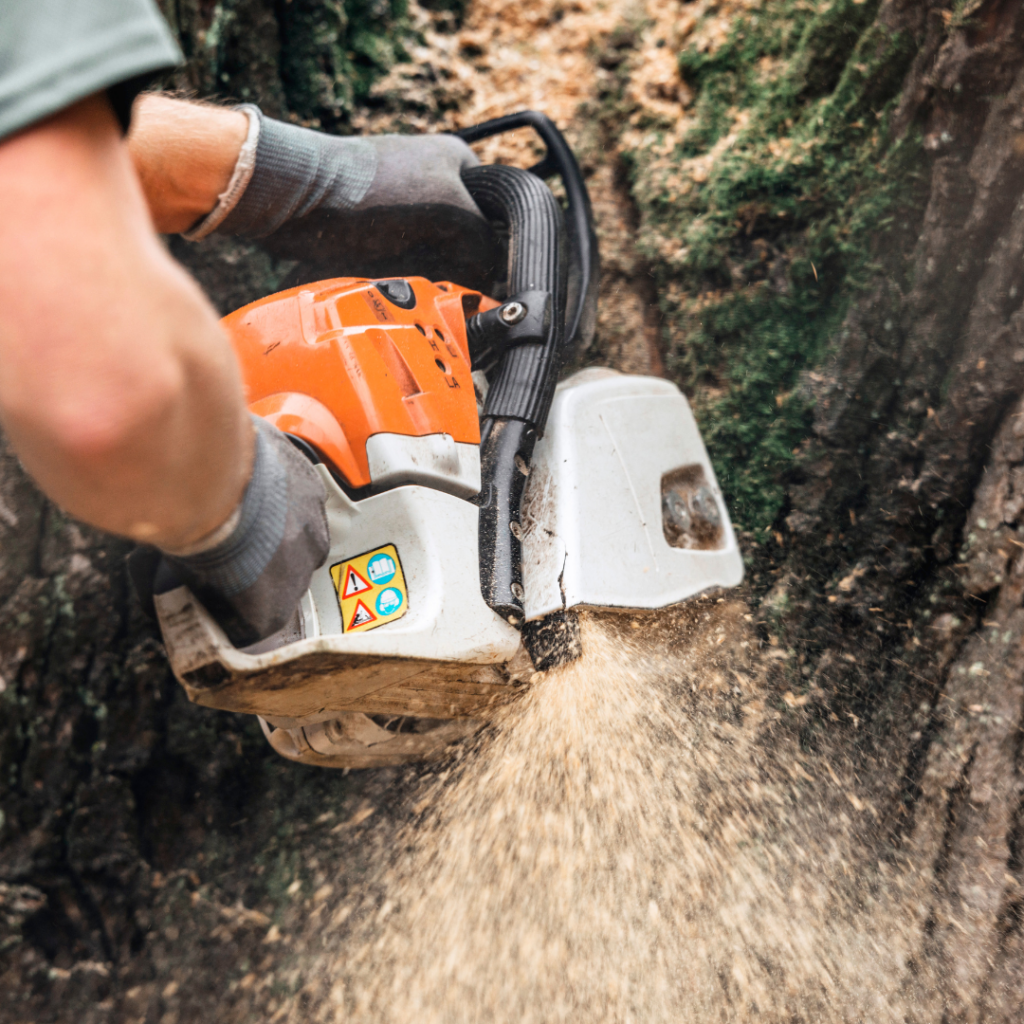In the realm of arboriculture, the safe removal of trees is not merely about chopping down branches. It’s a nuanced practice that demands precision, expertise, and the right tools. Whether it’s to eliminate a hazardous tree or clear space for development, employing the top tools and techniques ensures not just the safety of the arborist, but also the protection of surrounding property and people. In this comprehensive guide, we delve into the top tools and techniques employed in safe tree removal. From the indispensable chainsaw to advanced rigging systems, each instrument plays a crucial role in the process. Furthermore, we’ll explore the techniques—such as directional felling and crane-assisted removal—that arborists utilize to navigate complex scenarios, ensuring the efficient and secure elimination of trees. So, whether you’re a professional arborist seeking to enhance your skills or a homeowner contemplating tree removal, this resource aims to provide valuable insights into the tools and techniques essential for safe and successful tree removal.
A Comprehensive Guide to Safe Tree Removal Techniques
Tree removal is a complex task that requires careful planning, proper equipment, and adherence to safety protocols. Whether you’re a homeowner looking to remove a tree from your property or a professional arborist, understanding safe tree removal techniques is essential to prevent accidents and property damage. In this comprehensive guide, we’ll explore eight proven techniques for safely removing trees of all sizes and in various environments.

Directional Felling
Directional felling is one of the most common techniques used in tree removal, especially in open areas. It involves cutting a notch on the side of the tree facing the direction you want it to fall, followed by a back cut on the opposite side. Proper assessment of the tree’s lean, wind direction, and surrounding obstacles is crucial to ensure a controlled fall and minimize risks.
Crane-Assisted Removal
For large trees or those located in confined spaces, crane-assisted removal is often the safest option. A crane is used to lift and lower sections of the tree systematically, allowing for precise control over the direction and speed of the removal process. This technique is ideal for minimizing damage to surrounding structures and landscaping.
Dismantling
Dismantling involves removing a tree in sections, starting from the top and working downward. It is typically used in urban areas where there is limited space to safely fell the tree in one piece. Arborists use ropes, rigging, and specialized cutting techniques to lower each section of the tree safely to the ground, avoiding obstacles and minimizing impact.
Rigging and Lowering
Rigging and lowering techniques are essential for safely removing large tree limbs or sections. Arborists use ropes, pulleys, and rigging devices to control the descent of heavy branches and tree sections, preventing them from causing damage to property or injuring workers below. Proper rigging techniques require skill and expertise to execute safely.
Mechanical Tree Removal
Mechanical tree removal involves the use of specialized equipment such as stump grinders, chippers, and aerial lifts to facilitate the removal process. These machines can make quick work of tree debris and stumps, reducing the manual labor required and speeding up the cleanup process. However, proper training and safety precautions are necessary when operating heavy machinery.
Preventing Accidents: Common Hazards in Tree Removal and How to Avoid Them
Tree removal is a hazardous undertaking that poses numerous risks to both workers and property. From falling branches to unstable trees, arborists and homeowners must be aware of the potential hazards associated with tree removal and take proactive measures to mitigate these risks. In this article, we’ll identify eight common hazards in tree removal and provide practical tips on how to avoid accidents and ensure a safe working environment.
Unstable Trees
One of the primary hazards in tree removal is dealing with unstable trees that may be leaning, diseased, or structurally compromised. These trees pose a significant risk of falling unpredictably, especially during high winds or heavy rainfall. To mitigate this hazard, arborists should conduct a thorough assessment of the tree’s health and stability before beginning removal operations. If a tree is deemed too hazardous to remove safely, it may be necessary to call in a professional with specialized equipment and expertise.
Falling Branches
During tree removal, branches can break off unexpectedly and fall onto workers below, causing serious injury or even fatalities. To prevent accidents, arborists should establish clear drop zones and use appropriate rigging and lowering techniques to control the descent of branches. Workers should also wear helmets and other personal protective equipment to minimize the risk of head injuries from falling debris.
Power Lines
Trees located near power lines present a significant hazard during removal operations. Contact with overhead power lines can result in electrocution and severe burns, posing a serious risk to workers and bystanders. Before attempting to remove a tree near power lines, it’s essential to contact the utility company to de-energize the lines or arrange for a qualified line clearance tree trimmer to safely work around them.
Improper Equipment Use
Using the wrong tools or equipment for tree removal can lead to accidents and injuries. Chainsaws, ropes, and rigging devices should be properly maintained and used according to manufacturer guidelines. Workers should receive thorough training in equipment operation and safety procedures to minimize the risk of accidents caused by equipment malfunction or misuse.
Poor Weather Conditions:
Inclement weather such as high winds, heavy rain, or ice accumulation can increase the likelihood of accidents during tree removal. These conditions can make trees more prone to falling unpredictably and create slippery working surfaces, increasing the risk of slips, trips, and falls. Arborists should closely monitor weather forecasts and postpone tree removal operations if conditions are unsafe.
The Role of Technology in Modern Tree Removal Practices
In recent years, advancements in technology have revolutionized the field of tree removal, making operations safer, more efficient, and environmentally friendly. From aerial drones for surveying to tree-climbing robots for accessing difficult areas, technology plays a crucial role in modern tree removal practices. Let’s explore some key ways technology is shaping the industry.
- Aerial Drones: Drones equipped with high-resolution cameras and LiDAR technology are used for aerial surveys, allowing arborists to assess tree health, size, and structural integrity without the need for traditional climbing methods.
- Tree-Climbing Robots: Robotic climbing devices can ascend tall trees safely, providing access for inspections, pruning, and removal in challenging environments where human climbers may face increased risks.
- GIS Mapping Software: Geographic Information System (GIS) mapping software enables arborists to create detailed maps of tree populations, track maintenance schedules, and identify potential hazards, improving planning and management of removal operations.
- Hydraulic Equipment: Hydraulic tools such as cranes, lifts, and grapples facilitate safe and precise tree removal, reducing manual labor and minimizing the risk of accidents caused by falling branches or unstable trees.
Conclusion
Understanding the top tools and techniques for safe tree removal is paramount for both professionals and homeowners alike. By employing the right tools and techniques, such as using proper protective gear, assessing the tree’s condition, and employing safe cutting practices, the risks associated with tree removal can be significantly mitigated. Moreover, staying informed about environmentally friendly practices, local regulations, and seeking professional assistance when needed are integral parts of ensuring safe and responsible tree removal.
For expert tree removal services in Ocala, FL, look no further than Tree Service Legends. With a dedication to safety, professionalism, and environmental stewardship, our team utilizes the latest tools and techniques to safely and efficiently remove trees while minimizing impact on surrounding landscapes. Contact us today at (352) 558-2348 to schedule a consultation or learn more about our services. Let us help you with all your tree removal needs while ensuring the safety of your property and the environment.
